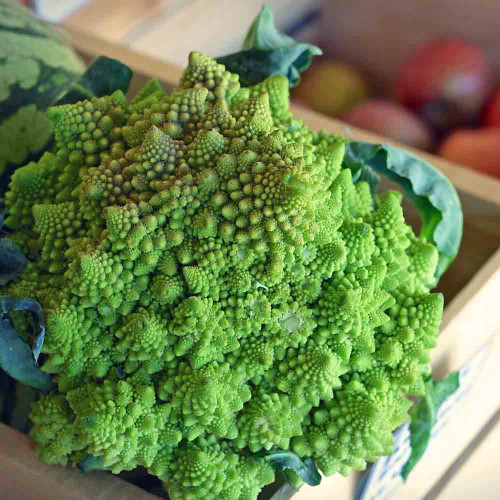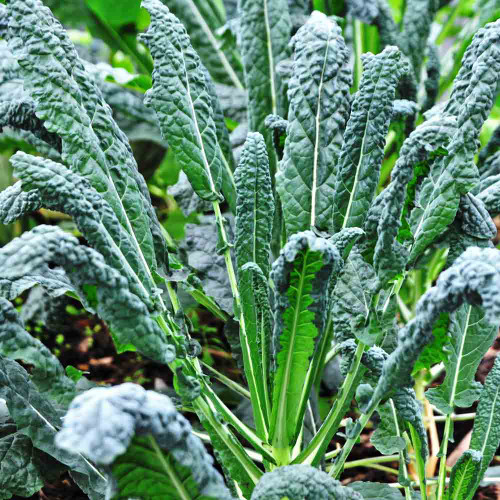Savoy Perfection Cabbage Seeds - (Brassica oleracea)
- SKU:
- V1328
- Seed Count:
- Approx 100 seeds per pack
- Days to Maturity:
- 90 days
- Days to Germination:
- 7-10 days @ 70F
- Plant Spacing:
- 24-36"
- Light Preference:
- Full sun to partial shade depending on climate
- Soil Requirements:
- Well drained
- Status:
- Heirloom, Non-Hybrid, Non-GMO seeds
Description
Savoy Perfection Cabbage: Sweet and Tender Stunning Beauty with Centuries of Flavor
From the rolling hills of the historic Savoy region – southeastern France, spilling into parts of Italy and Switzerland – comes a cabbage with centuries of tradition that shatters expectations. Its leaves – intricately ruffled as a Victorian collar – unfurl in a mesmerizing display of ruffles and folds painted in a deep, majestic green. But here's the surprise – it tastes as delicate as it looks, with sweet, nutty notes and leaves so tender you can enjoy them raw or cooked.
This cabbage traces its roots back centuries, hailing from a picturesque corner of Europe famed for its culinary traditions. Farmers there have long prized it for its unique sweetness and tender texture. It stands up to hearty, long-cooked dishes yet shines equally bright in fresh, vibrant recipes. Gardeners treasure its lineage, carefully passing down seeds from generation to generation, ensuring this exceptional vegetable doesn't fade into obscurity.
This heirloom gem of the garden has earned its name of Savoy Perfection cabbage.
Details
Savoy cabbage forms large, round, drum-like heads, making it a type of drumhead cabbage. Unlike typical smooth-leafed cabbages, this heirloom variety has exquisitely crinkled outer leaves that aren't just beautiful – their intricate folds contribute to the cabbage's tenderness and mild flavor.
The heads are large, 6-8 lb, and have a sweet, delicate flavor—you won't get that harsh sulfur smell typical of other cabbages. This hardy, easy-to-grow variety thrives as a fall crop, its flavor sweetening even more after a touch of frost. With its abundant yields, it is perfect for home gardens.
Sprouts emerge as tiny, delicate seedlings with smooth, light green seed leaves. Within weeks, the signature crinkled texture appears on true leaves, initially in a lighter green shade. As the plant matures, leaves become abundant, and crinkles deepen. A central head forms into a dense, 8-12 inch globe. Deep green leaves completely enclose the heart, creating a visually stunning, tightly packed head.
History
The first cabbages emerged around 2,500 years ago as leafy kales prized for their edible foliage. Unlike today's dense heads, they descended from wild ancestors native to coastal Europe, particularly the Mediterranean. These wild cabbages were tall, spindly plants with loose, bitter leaves – a far cry from the cabbages we know.
Cabbage (Brassica oleracea) was a Roman kitchen staple. Cato the Elder (234 – 149 BC) championed its cultivation and health benefits, while Pliny the Elder (23–79 AD) described a surprising variety – from large-leafed forms to those resembling early cauliflower. As the Roman Empire expanded, so did cabbage cultivation. It became a vital crop across Europe, providing sustenance during lean times and essential nutrients. Romans prized cabbage for its flavor and supposed medicinal uses, believing it cured everything from hangovers to ulcers!
Familiar tight-headed cabbages appeared in England around the 14th century, prized for their compact size and long storage qualities. European explorers took cabbage worldwide, where it quickly adapted and became a staple in diverse regional cuisines.
The Savoy region, spanning parts of France (primarily Auvergne-Rhône-Alpes), Italy, and historically even Switzerland, is known for its cool climate and fertile valleys. It is ideal for growing Brassica crops, including the distinctive, crinkled-leaf Savoy cabbage. Local farmers likely cultivated this variety for centuries, selecting for its flavor, texture, and hardiness. The "Perfection" name likely emerged in the 19th century, possibly highlighting the cabbage's uniformity, superior taste, or simply as a marketing boost.
Uses
Savoy Perfection's tender leaves are perfect for fresh salads, slaws, or stuffings. Enjoy them shredded in slaws with a bright vinaigrette or alongside other seasonal vegetables. Their pliable texture also makes them ideal for flavorful cabbage rolls. For a simple, delicious side dish, sauté shredded Savoy cabbage with garlic, olive oil, and a squeeze of lemon to highlight its sweet, nutty notes. The cabbage's sweetness complements rich, creamy dishes – try it in cheesy bakes or topped with a decadent sauce like Gruyère béchamel.
Classic Savoyard dishes showcase the region's cabbage in comforting preparations. Soupe de Chalet is a hearty, warming soup featuring potatoes, Savoy cabbage, and a rich broth, often with the smoky depth of bacon or sausage. Farcement, a savory baked dish, combines ground pork, rice, herbs, and finely chopped Savoy cabbage, all wrapped in blanched cabbage leaves. Potée Savoyarde delivers a rustic, satisfying stew where Savoy cabbage joins smoked meats, root vegetables, and white beans.
To preserve Savoy cabbage for winter, people historically relied on lacto-fermentation (a process similar to making sauerkraut). This natural process relies on beneficial bacteria already on the cabbage. Salt draws out moisture, creating a brine where these bacteria thrive. They convert cabbage sugars into lactic acid, giving a tangy flavor and acting as a natural preservative.
Companion Planting
Beneficial Companions – Herbs like dill, chamomile, and rosemary can deter pests and attract beneficial insects. Marigolds and nasturtiums act as natural pest repellents.
Antagonist Pairings – Avoid planting near other brassicas (like broccoli or cauliflower) to prevent competition and cross-pollination. Beans and strawberries can hinder the growth of Savoy Perfection.
Pest and Disease Management
Gardeners can combat cabbage worms, aphids, and flea beetles by handpicking, using row covers, applying neem oil, and using diatomaceous earth.
Planting and Growing Tips
Before planting, enrich your soil with compost and aged manure for optimal growth. Seed germination is best when soil temperature is above 65-75°F, with germination taking 7-10 days. In cooler areas of the United States, sow cabbage seeds directly in the garden after the last frost; planting depth should be ½ inch deep, 12-18 inches apart, or start indoors 4-6 weeks earlier. Transplant seedlings with true leaves into a sunny spot with 24-inch spacing for large heads. Water deeply 1-2 times weekly, especially during head formation, and mulch to conserve moisture and suppress weeds.
Troubleshooting –
Yellow leaves may indicate a nutrient deficiency, which can be treated with a side-dressing of compost or a liquid fertilizer.
Heat stress or inconsistent watering may cause your cabbages to flower prematurely, a phenomenon known as bolting. To prevent this, maintain consistent moisture levels and consider shading your plants during hot spells.
Harvest Tips
Thanks to the cooler temperatures, harvest Savoy Perfection cabbage in the morning when the leaves are crisp and full of moisture. This also captures their peak sweetness—plants produce sugars during the day, and harvesting early means you get that sweetness before the cabbage starts using it for its own growth.
While primarily grown for its dense head, Savoy Perfection can be harvested early on. However, don't expect it to regrow like lettuce or baby kale. Taking too many outer leaves can hinder the main head's development. If you want early greens, take just a few leaves per plant, keeping the central growing point intact.
For maximum storage life, leave the Savoy Perfection head intact with a few outer leaves for protection. Store it in a cool (32-40°F), humid (90-95%) place – a root cellar or humidity-controlled refrigerator drawer is ideal. Before storing, remove damaged or very dirty outer leaves, but don't wash the cabbage, as extra moisture leads to rot. Properly stored, Savoy Perfection can stay fresh for several months!
Learn More
From the soil to the seed to the food you eat - we'll help you grow your best garden!
1 Review
-
No leftovers, its a keeper!
The Master Gardeners at the historic Francis Land House Heirloom Vegetable Garden in Virginia Beach, Virginia are providing feedback on the donated seeds. Our garden consists of 35 raised beds, each four feet by twenty feet. The garden receives full sun all day and is fertilized with a combination of compost and commercial organic fertilizer. Harvested from mid to the end of June. A very attractive and unusual cabbage, it did well, nice size and good taste. We did note some slug damage. I thought you might be interested in some comments from one of the volunteers I cut and pasted below: I had never bought or cooked Savoy cabbage, and if I have eaten it, didn't know it. The head was very firm and dense, so decided to cook one half and then make a cole slaw with the second half. This would be a good test to get the most trial taste. Difference between Savoy and green cabbage was very apparent, cole slaw had good texture, a bit of a tang, different from green cabbage, we enjoyed as Savoy was not as sweet as other cabbage, a nice change. The other half was steamed, the cooking time was a little longer than green cabbage, next time would cut out the large vein stems in the outer leaves. Did not want to cook too long as we do not like mushy veggies. Taste was good, still a bit of tang we enjoyed and with adding salt and pepper was very good. Texture still good and color very nice. I'm very thankful for the opportunity to try this cabbage and will now buy Savoy when possible to try in other recipes. especially with sauces as the texture is such, sauces would adhere to the cabbage better and give more taste. Another plus for the Savoy the leaves make a nice plate garnishment for other dishes. Savoy was a great addition to grow in the garden and would recommend planting again. Also no leftovers, so it’s a keeper.













